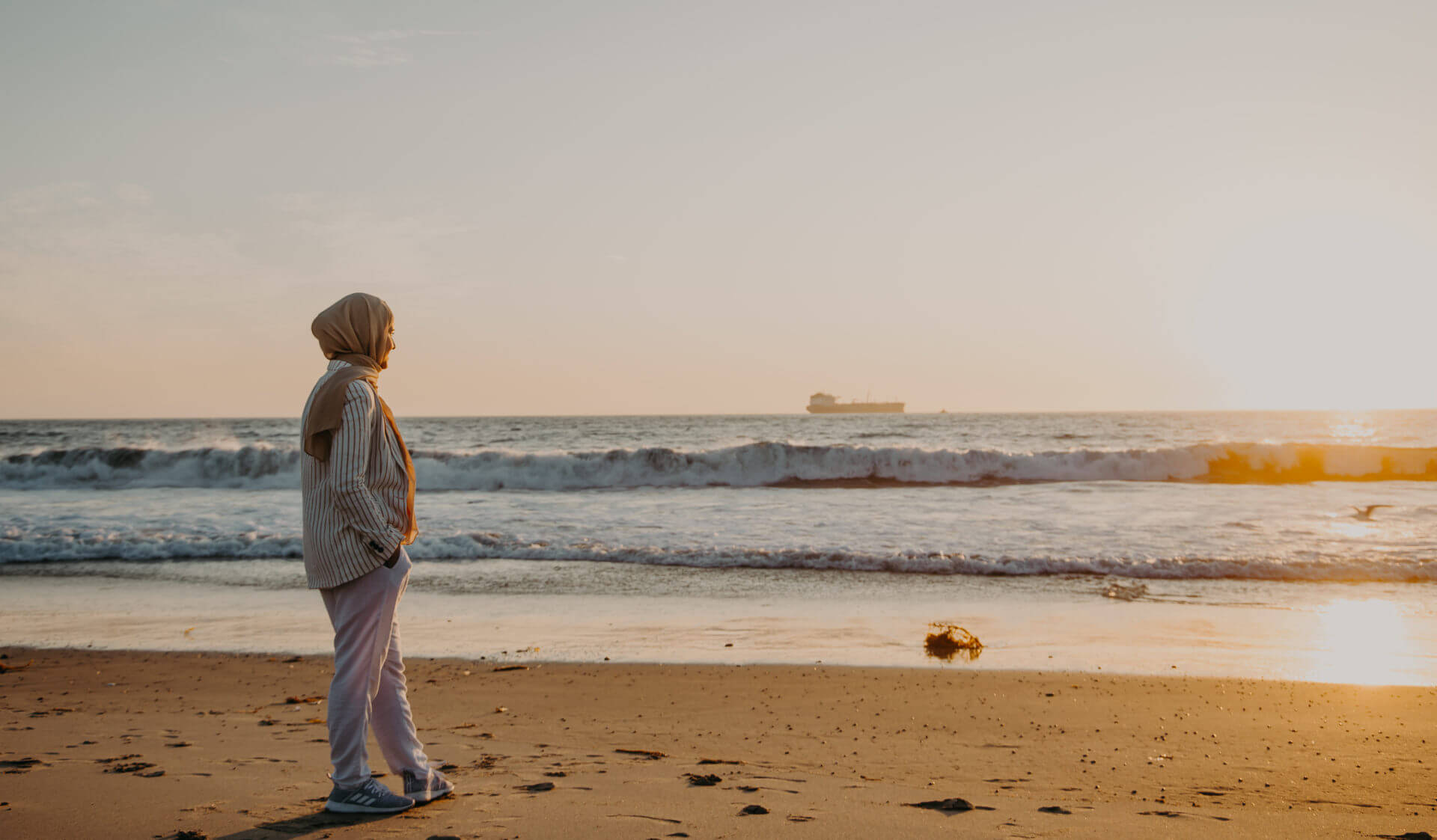An Engineer-Diplomat Reimagines the Persian Gulf
In 1991, Ghena Alhanaee had just taken her first steps in her native United Arab Emirates when the Gulf War broke out.
That year, in a last-ditch attempt to prevent U.S. forces from landing on the beaches of Kuwait, Iraqi forces intentionally dumped an estimated three to eleven million barrels of oil into the Persian Gulf, creating one of the worst environmental disasters in history. The spill contaminated the coastal areas of several countries, including Kuwait and Saudi Arabia. Cleanup efforts are still taking place today.
Fast-forward to 2020: Megacities have sprung out of the region’s desert sands, there are over 800 offshore oil and gas platforms in the Gulf, and 50,000 tankers pass through these waters each year. The surrounding countries are heavily dependent on desalinated Gulf water for their drinking supplies, and nuclear power is rapidly growing in the region. The Gulf is an umbilical cord that connects the eight countries that surround it: Iran, Oman, the United Arab Emirates, Saudi Arabia, Bahrain, Kuwait, Qatar and Iraq.
A 1991-scale oil spill, or a Chernobyl, or a Fukushima-like event could devastate the region, threatening the surrounding countries’ ecosystems and contaminating their main source of drinking water. To make things more alarming, consider this: Many of the countries have only a two- to three-day supply of water to tap in the event of an emergency.
Today, as a Ph.D. student in the Sonny Astani Department of Civil and Environmental Engineering, Alhanaee is actively designing a framework to prevent and prepare the region for this type of catastrophic event. She envisions a linked emergency response plan, not just across industries but also across countries, an effort that has put her in the vanguard of “engineering diplomacy” — the intersection of engineering, technology and scientific research with foreign policy.

In October 2019, the MIT Technology Review recognized Alhanaee’s groundbreaking work by naming her one of the top 20 innovators under age 35 in the Middle East and North Africa (MENA) region. The annual list recognizes those whose technical work promises to shape the coming decades.
“One-third of oil production is in the Gulf, and so is nearly half of the world’s desalination capacity,” Alhanaee said. “Now, add nuclear energy to the mix. We have one reactor operating in Iran, four being built in the U.A.E. and at least two planned in Saudi Arabia. These three industries are inextricably tied in ways that can affect the world on a massive scale.”
When Alhanaee looks out over the Gulf she sees not only a striking tapestry of architectural marvels, the ancient and modern blending together in a region fragmented by conflict. She also sees an interlinked system of desalination plants, oil platforms and pipelines that carry the lifeblood of the economy, and crop fields that reach their green hands to heaven.
Her first step is to accurately measure and model how these sectors affect each other, humanity and the environment.
With an average of only eight inches of rainfall per year, the region has long been subjected to extreme climate conditions. Meanwhile, its population continues to grow at an astounding rate — 30 percent between 2000 and 2020 alone.
“The lives of 168 million people who live in this major geopolitically and ecologically sensitive region could be impacted by Ghena’s research,” said Professor Najmedin Meshkati, Alhanaee’s Ph.D. adviser and a global expert in nuclear safety.
When she returns home, traveling through cities like Dubai on its gleaming driverless metro trains, it’s becoming harder for Alhanaee to picture the old world. For centuries, Dubai was a poor fishing village and trading port known primarily for its pearls. The oil and real estate boom have transformed it into a city that boasts the world’s tallest building, one of its densest collections of skyscrapers and its third-busiest airport.
Her passion now is to get her compelling data about how interlinked the people in the region really are into the hands of the scientific community and policymakers to guide them to action. To make this a reality, she has called for the creation of a multinational entity made up of science-diplomats like herself that all nations in the region have a seat on.
“Imagine Saudi Arabia, Iran, Iraq, U.A.E. and others sitting down and working together to solve these challenges and make a plan,” she said. “That, in itself, would be a major accomplishment for the world.”
She will start in her home country, the U.A.E., where she plans to return after graduation and take her place in the story of transformation happening inside her own pearl city.
The MIT Technology Review award has special significance for Alhanaee, who is one of the few women in the U.A.E. pursuing a Ph.D.
“I’ve been blessed to do this thanks to the support of my family, but not everyone has that,” said Alhanaee, who hails from a multicultural family. Her mother is Venezuelan and a mathematician, while her father is an Emirati physicist. “My parents showed me that education is the key that opens the doors to the world,” she said.
Alhanaee continues to present her work internationally, from North America to Europe and the Middle East, but she regards USC Viterbi as her “home away from home,” the place that allowed her to “flourish as a global scholar.”
“I want to be at the forefront of implementing the research into the real world,” she said.
Trailblazers like Alhanaee often grow tired of bureaucrat-speak about how to fix it, of conferences and summits that call for action but produce little in terms of impact. She prefers to lead meaningful change on the ground.
“The [U.A.E.] leadership has recognized that growth is not sustainable without recognizing our overexploitation of scant resources and taking action to reduce our environmental footprint,” she said. “But without cooperation, sustainability will be only a short-lived dream, and prosperity will be a disappearing mirage for millions of people in the region.”




